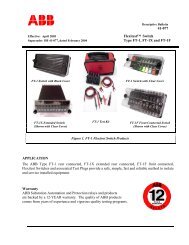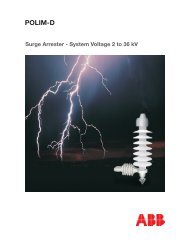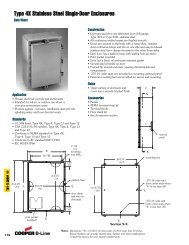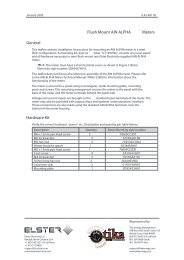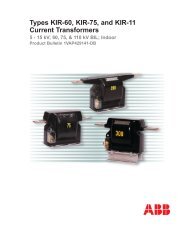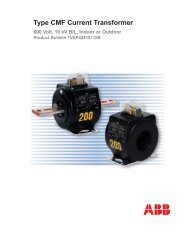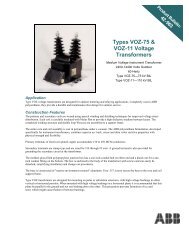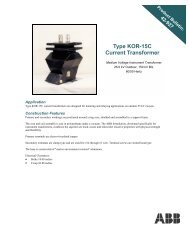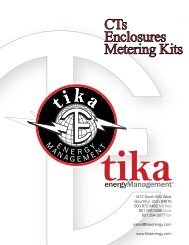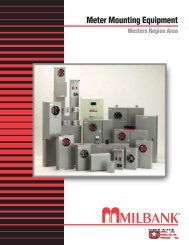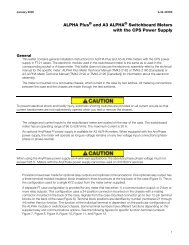TEST SWITCHES TEST SWITCHES - Brooks Utility
TEST SWITCHES TEST SWITCHES - Brooks Utility
TEST SWITCHES TEST SWITCHES - Brooks Utility
Create successful ePaper yourself
Turn your PDF publications into a flip-book with our unique Google optimized e-Paper software.
Meter Devices Test Switches<br />
Small Base Test Switches<br />
Reactive Volt-Ampere Metering<br />
Switches<br />
Small base test switches are made on Resiten ® bases.<br />
They are available in any combination of currents or<br />
potentials, front or back connected, with handle<br />
ganging for single throw capability as an option.<br />
Switch elements are the same as on large base test<br />
switches. These switches are used where physical<br />
space is at a premium.<br />
Single or Double Throw<br />
Test Switches<br />
Reactive volt-ampere metering switches are a doublethrow<br />
type that permits testing reactive meters as<br />
KWH meters by shifting the potential. Commonly<br />
known as “heel-and-toe switches”, they are available<br />
in two types: “make-after-break” in which the switch<br />
blade has a neutral position and leaves the first jaw<br />
before it enters the second jaw; and “make-before<br />
break” in which the blade enters the second jaw<br />
before it leaves the first jaw. All Meter Devices heel<br />
and toe switches are furnished “make-after-break”<br />
unless specified otherwise.<br />
Single or double throw switches of<br />
any number of poles are available<br />
in front or back-connected styles.<br />
Fusing provisions for a 30 or 60<br />
ampere fuse is also available.<br />
Fused Potential<br />
Switches<br />
Potential switches are available in<br />
single or multiple pole arrangements<br />
with provisions for<br />
mounting a 30 or 60 ampere fuse.<br />
Test switches are available in a<br />
front or back connected style, as<br />
shown above.<br />
Fuse Blocks<br />
Some utilities specify that where<br />
potential coils, telemetering<br />
circuits, or communication circuits<br />
are connected directly to a service<br />
without potential transformers,<br />
fuses must be used in the leads.<br />
Equipment protection and the<br />
presence of relaying devices may<br />
make the use of fuses advisable.<br />
The Catalog No. 101-1375 single<br />
pole Fuseholder Block here<br />
illustrated is for mounting on the<br />
primary bar of 600 volt current<br />
transformers.<br />
Unmounted Test<br />
Switches<br />
Meter Devices Unmounted<br />
Potential Test Switches can be<br />
supplied to meet your special<br />
requirements. These switches are<br />
available in single pole or ganged<br />
as two up to six poles, single<br />
throw, or double throw, front or<br />
back-connected. Illustrations are<br />
back connected.<br />
7



